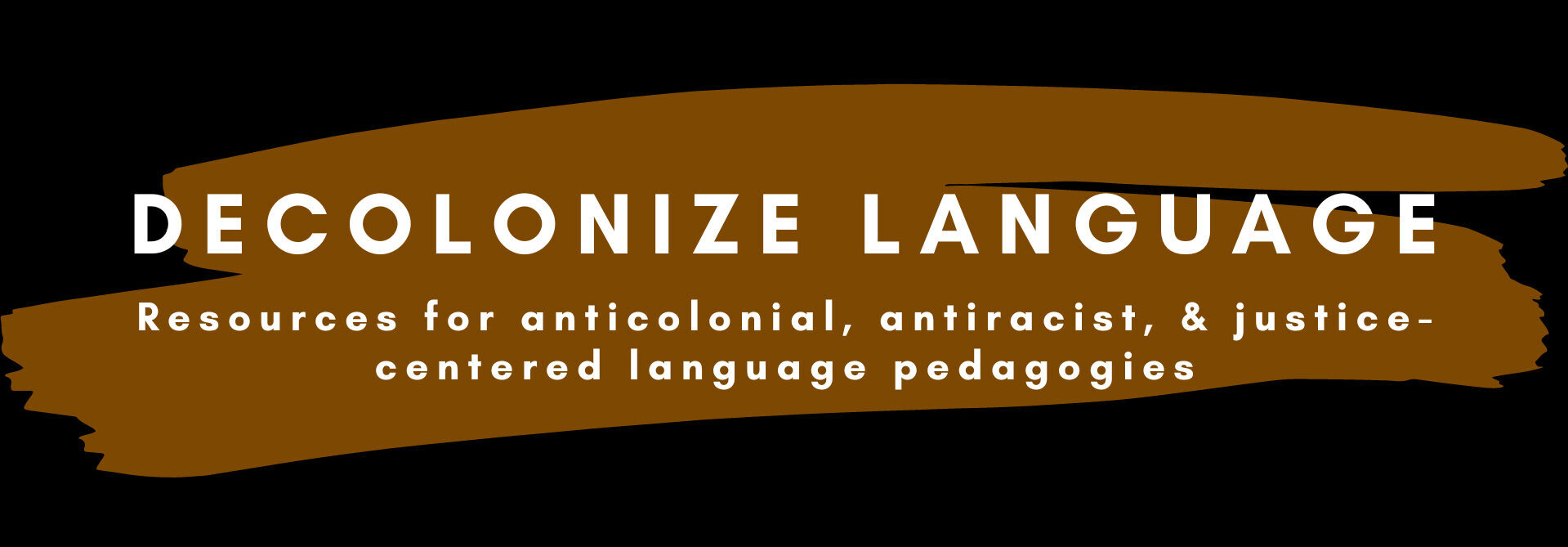
Finding Comfort in the Discomfort: Critical Moments and Courageous Conversations
“Yet we don’t get our hands too dirty…We don’t usually listen to stories of escaping war and finding refuge and racism in a new land, despite the fact that these events occur in settings where so many of the languages taught in classrooms around the world are spoken” (Ennser-Kananen, 2016, p.557).
Uncomfortable Moments
I get it. People don’t like conflict. People don’t like discomfort. I don’t like conflict or discomfort either, and I typically avoid those types of situations whenever possible. I like for things to be predictable and for conversations to lead to closure rather than chaos. But alas, critical and justice-oriented pedagogies rarely afford us such luxuries.
Over the past several years, I have given dozens of talks on how to incorporate critical and justice-oriented pedagogies in the language classroom. One of the biggest pushbacks I get is from teachers who are hesitant to tackle potentially polemic topics due to negative consequences that might arise. These teachers are not alone in their hesitance. In a study conducted by Wassell et al. (2019), language teachers identified the following challenges to the teaching of social justice
- Fear of potential backlash
- Lack of supportive colleagues
- Pushback from students
- Lack of developmentally & linguistically appropriate curricular resources
Instructors are not alone. Students, too, may have reservations when it comes to these types of discussions. For example, consider the following comment from one of my early course evaluations: “[We had] very politically charged conversations with little room to feel comfortable sharing an opinion different from the majority.”
Strategies for Engagement
Even though sometimes I think that teachers can be overly cautious and may (unintentionally) exaggerate the amount of pushback they will receive, the truth is those concerns are valid, and I have even experienced pushback in my own classes. Also, the fact that I’m a Black man who teaches Spanish to overwhelmingly White student populations gives me more reasons to be a little reticent. For example, on many occasions I’ve been accused of pushing a racial agenda and unnecessarily inserting race into the classroom. So, I do understand the tendency to shy away from controversial, uncomfortable topics and have been tempted to do so. Yes, it’s irresponsible from a justice-oriented pedagogical perspective, but at least it protects my mental health! Nonetheless, I persist in this work, because I truly believe in its transformative potential, and I do think that there are some concrete strategies that instructors can employ to create a supportive (yet still messy and unpredictable) environment to address these issues. In this post, I highlight some of those strategies, many of which are based on an article I co-authored with Stacey Margarita Johnson (2015).
- Use small, consistent groups. This allows students to develop more intimate relationships throughout the course, which fosters a classroom climate that might lead to more vulnerable sharing and richer dialogues. In addition, it helps guide students to trust each other’s good intentions, promotes positive feelings of belonging, and creates a greater sense of community as students overcome challenges together. This is especially important in online classes, where team building can be an inherent challenge. In my online classes, I typically divide large classes into smaller groups of 6-8 students. Students complete almost all collaborative activities (e.g., discussion boards, conversations, annotated readings) with that same group of 6-8 students throughout the entire course.
- Incorporate several low/no-stakes, community-building activities (brain breaks, games, icebreakers) throughout the course. One of my early mistakes as a teacher was that I incorporated icebreaker-style activities at the beginning of the term, but I didn’t do it enough once we finished the preliminary unit. The result was that although I had established a fun, inclusive, light-hearted classroom climate at the beginning, as the semester continued students eventually became stagnant in nurturing and expanding those relationships. I quickly realized the importance of intentionally including low/no-stakes community-building activities throughout the entirety of the course and not just at the beginning of the course or each unit. These activities aid in lowering the students’ affective filters and building the types of relationships that are necessary for students to engage collaboratively in the study of critical topics.
- Establish guidelines for healthy dialogue and disagreement. Explicitly explain and model for students how they should engage in conversations in which there will likely be differences of opinion. A good preliminary activity might be to post a potentially controversial opinion and then as a class brainstorm ways that students might respond or engage if they heard that opinion. Glen Singleton’s (2014) courageous conversation framework also offers helpful suggestions for centering the discussion around controversial topics: 1) stay engaged, 2) speak your truth, 3) experience discomfort, and 4) expect and accept non-closure.
- Be as proactive as possible. Before introducing these topics, instructors must plan and reflect as much as possible. This is necessary not only to provide the linguistic and contextual support that students will need but also to anticipate possible ways that the conversation may become derailed and to develop a course of action for redirecting the conversation when necessary and providing support for students during the process. Of course, it’s impossible to predict everything that students will say, but better prepare the instructor to respond during these critical moments. Chapter 6 (“Critical Moments”) of Glynn, Wesely, and Wassell’s (2018) Words and Actions: Teaching Languages Through the Lens of Social Justice provides additional guidance and resources for ways that instructors can prepare for these critical moments.
References
Ennser-Kananen, J. (2016). A pedagogy of pain: New directions for world language education. Modern Language Journal, 100(2), 556-564.
Glynn, C., Wesely, P., & Wassell, B. (2018). Words and actions: Teaching languages through the lens of social justice (2nd ed.). ACTFL.
Johnson, S. M., & Randolph, L. J., Jr. (2015). Critical pedagogy for intercultural communicative competence: Getting started. The Language Educator, 10(3), 36-39.
Singleton, G (2014). Courageous conversations about race: A field guide for achieving equity in schools (2nd ed.). Corwin.
Wassell, B. A., Wesely, P., & Glynn, C. (2019). Agents of change: Reimagining curriculum and instruction in world language classrooms through social justice education. Journal of Curriculum and Pedagogy, 1-22.
Note: This post was originally published as a blog entry for the Center for Open Educational Resources and Language Learning (COERLL) on August 16, 2021.

